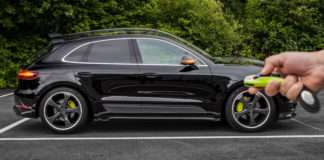Peugeot is pushing the boundaries of automotive interface design with its new Hypersquare steering system, previewed on the radical Polygon concept and slated for potential inclusion in the next-generation 208 by 2027. This isn’t just an incremental upgrade; it’s a fundamental shift in how drivers interact with their vehicles, moving beyond the already unconventional i-Cockpit introduced in 2010.
The Evolution of Peugeot’s Driver Experience
The i-Cockpit, featuring a small-diameter steering wheel positioned below the instrument cluster, was initially met with skepticism. However, Peugeot asserts its success, citing over 13 million cars sold equipped with the system. The 308, another i-Cockpit model, boasts a 73% repeat customer rate, indicating strong driver satisfaction. The Hypersquare represents the next step in this design philosophy.
How Hypersquare Works
The most striking feature is the rectangular steering “wheel.” Unlike conventional circular designs, the Hypersquare is thick and oddly shaped, with four fist-sized indentations. Each indentation houses standard fascia switchgear, operated by touch, allowing drivers to control most major car functions without removing their hands – a Formula 1-inspired approach.
Variable Steering Ratio
The core innovation lies in the variable steering ratio. At highway speeds (above 50 mph), the ratio is similar to conventional systems (around 16:1). However, at lower speeds, the ratio quickens dramatically – up to five times faster – providing exceptional agility during maneuvering. The steering effort is deliberately heavier than current i-Cockpit models, making sharper turns more deliberate, though this could be adjusted before production.
First Impressions
During a prototype drive on the Monaco Grand Prix circuit, the Hypersquare system proved surprisingly intuitive. Most drivers will adapt quickly to the increased responsiveness at low speeds and tighter corners. Once acclimated, conventional steering feels slow and cumbersome. The system’s goal is to make driving more intuitive and engaging, eliminating the need for excessive wheel-winding.
Peugeot’s Hypersquare system is a bold step forward in automotive interface design. By prioritizing responsiveness and intuitive control, it aims to redefine the driver experience.
The Hypersquare system isn’t just a gimmick; it’s a fundamental shift in how drivers interact with their vehicles. The system’s success will depend on whether drivers embrace the unconventional design and the increased responsiveness it offers























